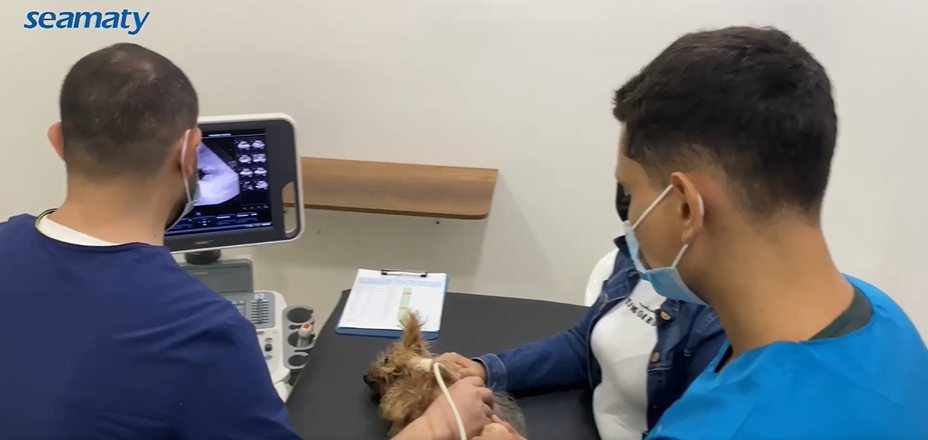A full set of
biochemical tests, electrolytes, complete hematological tests and urine tests are the most basic health information.
The "basal values" obtained from the tests in healthy animals serve as a reference range for the individual. Its clinical value lies in the high sensitivity of the test, which allows early detection of disease. Preoperative screening also allows for early detection of potential disease, thereby reducing the risk of anesthesia.
For example, a dog has had a creatinine baseline value of 0.7-0.9 mg/dl (reference range 0.5-1.8 mg/dl) for several years. These values are within the reference range, but the most recent value was 1.7 mg/dl. If there is no dehydration, higher than usual values indicate that this animal may be starting to have kidney disease.
In treatment, the test values will improve before the clinical signs. Therefore, changes in trend charts can monitor treatment, assess prognosis, and assist owners in making the right decisions. For example, in severe uremic patients, no significant improvement in creatinine and phosphorus values after aggressive treatment indicates a poor prognosis, while those with significant improvement have a better prognosis.
The full set of biochemical tests basically includes electrolytes (sodium, potassium, chloride), blood glucose (GLU), blood urea nitrogen (BUN), creatinine (CREA), phosphorus ion (PHOS), calcium ion (CA), total protein (TP), albumin (ALB), globulin, alanine aminotransferase (ALT), alkaline phosphatase (ALKP), gamma-glutamyl transpeptidase (GGT), total bilirubin (TB). Total bilirubin (TBIL), cholesterol (CHOL), amylase (AMYL), and lipase (LIPA). Some vet clinics use test sets that do not include ALB, GGT, LIPA, or chloride ions.
Albumin is an important protein that is synthesized by the liver. It has two main functions: to maintain osmolarity to prevent fluid from flowing from the blood into the tissues. The other function is to bind many hormones, calcium and magnesium ions and certain drugs.
Most of the elevated albumin is due to dehydration. Decreased albumin is a serious problem, commonly due to loss of kidney or gastrointestinal tract. Other causes include inadequate production due to severe liver abnormalities. Albumin testing is recommended at every test. Usually, albumin does not cause clinical symptoms until it drops to a very low level. Some diseases can cause a rapid drop in albumin, so it is important to check albumin levels closely before/after surgery.
Many veterinarians consider albumin as part of their routine health checks and include it in their infusion therapy. Albumin concentrations can be used to monitor infusion therapy.
GGT is a specific indicator of bile duct disease. Other biochemical items such as ALKP and CHOL are not always elevated in biliary disease. Slight increases are not specific and may be associated with cholestasis, bone disease or gastrointestinal disease. Even a fourfold increase in ALKP is not sufficient to diagnose cholestasis. Enzyme triggers can also cause a significant increase in ALKP. Therefore, the absence of GGT is even less diagnostic of cholestatic liver disease.
Although both ALKP and GGT can diagnose cholestasis, they have different sensitivities. The pattern of elevation also reflects different pathological changes. Post-hepatic cholestasis and biliary disease are usually characterized by a rise in GGT. Substantial liver disease is dominated by an increase in ALKP. Even if there is no other evidence of cholestasis, a slight to moderate increase in GGT is significant and requires further testing, such as abdominal imaging, to confirm the diagnosis.
A triple or significant increase in lipase above the basal value is strongly suspicious of pancreatitis. In pancreatitis without significant symptoms, failure to test for LIPA may delay or misdiagnose the disease. Spec cPL, Spec fPL and SNAP cPL/fPL tests are highly recommended when LIPA is slightly elevated, even if the animal has no obvious clinical signs.
The chloride and sodium ions are used to assess the level of dehydration and acid-base balance of the animal for infusion therapy. Basically, chloride ions are accompanied by changes in sodium ions; dehydration causes both to rise and overhydration causes both to fall.
Acid-base status is an easily overlooked problem, as a change in chloride ions as opposed to sodium ions indicates an acid-base imbalance. For example, hyperchloremic acidosis is a form of secretory acidemia. When the chloride ion rises with the sodium ion, metabolic acidosis is suspected due to loss of total carbon dioxide (tC02) or bicarbonate. Metabolic alkalosis is suspected when the chloride ion decreases with the sodium ion. The loss of chloride ions is usually due to vomiting or loss of stomach acid.
A complete report can easily indicate which values are abnormal. Comparison with previous data allows assessment of response to treatment and progression of the disease. Subtle changes in the body can also be detected in healthy animals from multiple tests.
In summary, the full range of biochemical, hematological and urine tests is both affordable and of great diagnostic value. We highly recommend testing for pets whether they are sick or not. In-clinic testing allows for prompt communication with the pet owner and treatment as soon as possible.



